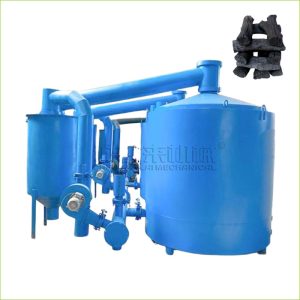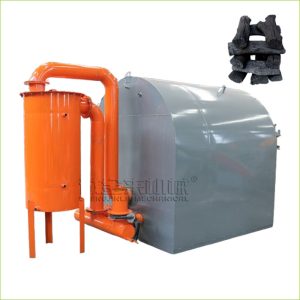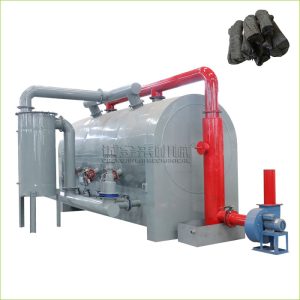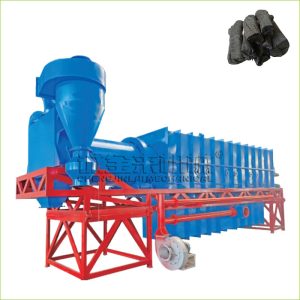Description
Globally, 8.5 million tons of coconut shells are discarded annually as agricultural waste. Rich in lignin (35-45%) and cellulose, these shells hold 52-55% fixed carbon – ideal for premium activated carbon production. Horizontal coconut shell carbonization furnace converts this undervalued biomass into high-purity charcoal through controlled pyrolysis, solving disposal issues while creating great market profit.Coconut Shell Activated Carbon is a highly porous adsorbent material produced by carbonizing and activating coconut shells.
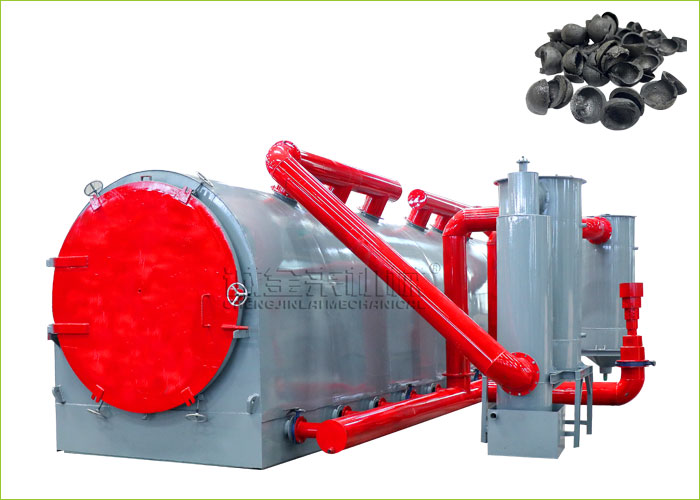
Carbonization Process Of Coconut Shell
1. Preheating Zone: Coconut shells enter a 200-300°C chamber, removing 12-15% moisture via indirect heat exchange.
2. Pyrolysis Core: At 450-600°C in oxygen-limited conditions, volatile gases (CO, CH₄) separate from fixed carbon.
3. Gas Recycling: Combustible gases power burners, cutting external energy needs by 60%.
4. Cooling Output: Charcoal exits at <80°C through water-sealed discharge, retaining 85%+ carbon content.
Horizontal Carbonization Furnace Parameter
| Model(m) | Capacity(t/h) | Dimension(m) | Weight(kg) |
| 1.0×1.5 | 0.4t/time | 1.0×1.5×1.8 | 600 |
| 1.5×3.0 | 1t/time | 1.5×3.0×2.2 | 1800 |
| 2.0×4.5 | 2t/time | 2.0×4.5×2.2 | 3500 |
| 2.0×6.0 | 3t/time | 9.0×2.4×2.9 | 5000 |
Here is the coconut shell carbonization furnace youtube video working process in our factory for your reference!!
Coconut Shell Furnace Features
1. Efficient carbonization design
Horizontal layer combustion structure: The horizontal combustion chamber design ensures that the coconut shell is evenly heated, with a carbonization rate of up to 95%+, avoiding the problem of incomplete combustion in traditional earth kilns.
Rapid circulation system: Some models are equipped with waste heat recovery devices to shorten the carbonization cycle (4-6 hours/batch), and the efficiency is 50% higher than that of traditional kilns.
2. Environmental protection and low emissions
Two-stage flue gas treatment: Through the cyclone dust removal + water curtain purification system, the smoke emission meets the EU/EPA standard and has no pungent odor.
Spontaneous combustion gas recovery: The combustible gas generated during the carbonization process is guided back to the combustion chamber for secondary use to reduce fuel consumption (saving 20-30% energy).
3. High output and finished product quality
High-density carbonization: The output coconut shell charcoal has a fixed carbon content of ≥80% and a volatile matter of <10%, which is suitable for high-end activated carbon raw materials or barbecue charcoal.
Modular capacity: from small (1-2 tons/day) to industrial grade (10 tons/day), it supports continuous feeding production.
4. Durable and easy to maintain
Refractory steel liner: The core components are made of 310S heat-resistant stainless steel, which is resistant to high temperature corrosion and has a service life of 5-8 years.
Detachable structure: Modular design of furnace door, flue, etc. is convenient for cleaning and troubleshooting.
5. Economic advantage
Quick return on investment: Taking the daily processing of 5 tons of coconut shell as an example, the cost can be recovered in 6-12 months (based on the market price of coconut shell charcoal $500/ton).
Multi-raw material compatibility: Compatible with biomass such as palm shell, fruit core, bamboo chips, etc., reducing the risk of raw material dependence.
Here is the coconut shell carbonization furnace working feedback from our Malaysia customer’s projects youtube video for your reference!!
Coconut Shell Carbonization Furnace Advantages
First, the horizontal design allows continuous 24/7 operation – 3x faster than vertical kilns.
Moreover, AI-powered sensors auto-adjust air intake, optimizing carbon yield to 48-52% (vs 38% traditional methods).
Critically, stainless steel 310S alloy resists chlorine corrosion from coconut salts.
Horizontal Carbonization Furnace Benefits
1. Cost Efficiency:Processes 1 ton shells with 15kW·h max power – 70% cheaper than drum kilns.
2. Quality Boost:Produces 3-5mm granules ideal for water filter activated carbon (CTC ≥100%).
3. Carbon Credits:VCS-certified systems generate 2.3 carbon credits/ton for eco-conscious buyers.
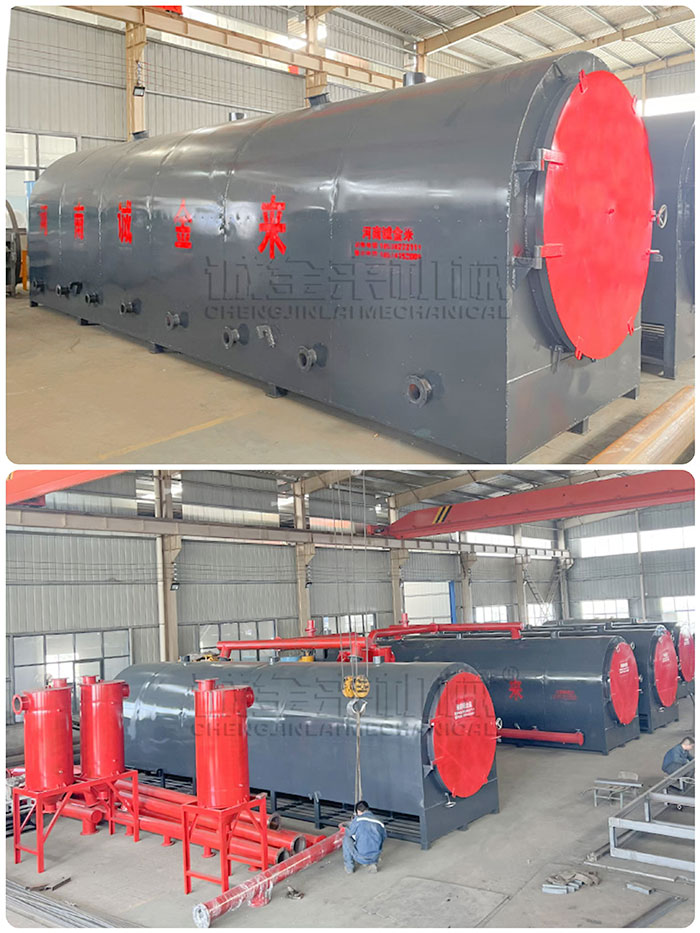
The horizontal coconut shell carbonization furnace presents a sustainable and profitable solution for transforming agricultural waste into high-value activated carbon. By leveraging advanced pyrolysis technology, this system maximizes carbon yield (48-52%), minimizes energy consumption (60% self-sustaining), and adheres to strict environmental standards (PM2.5 <20mg/Nm³).
With modular scalability, AI-driven optimization, and corrosion-resistant materials, it outperforms traditional kilns in efficiency, output quality, and operational longevity. For industries seeking eco-friendly waste valorization, this technology not only addresses disposal challenges but also unlocks new revenue streams—from premium charcoal production to carbon credit generation.
Turn waste into wealth—where sustainability meets profitability.
UNEP forecasts 11% annual growth in activated carbon demand – boosts your business now with industrial-grade coconut shell carbonization furnace tech! [Contact us] for a customized coconut shell furnace solution tailored to your production needs.






